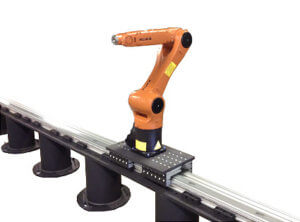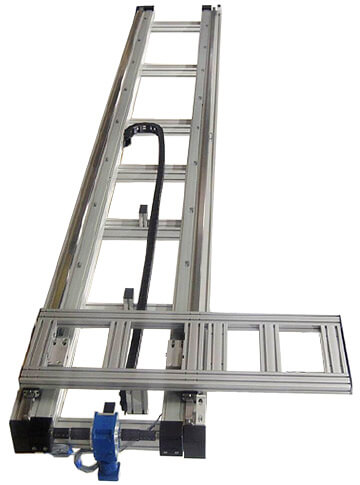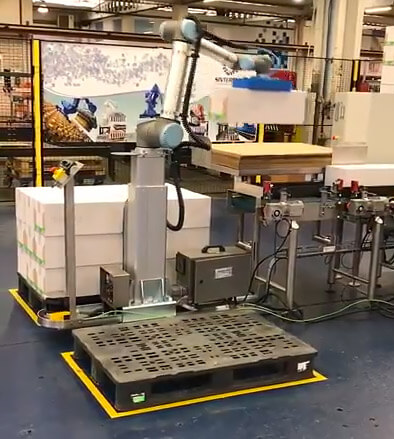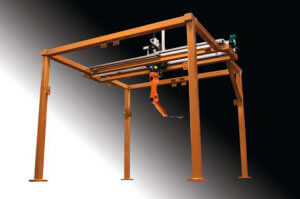How Robot Transport Units Can Extend Reach and Add 7th Axis Capabilities
November 20th, 2024 by David Casillo. Product News
Integrating a SCARA Robot with a Linear RTU Can Significantly Increase the Work Envelope
Robots have become pervasive in manufacturing worldwide. According to the Association for Advancing Automation (A3), the North American robotics market has set new records this year, which aligns with the global trend that also shows rapid growth.
As manufacturers, integrators and engineers apply Robots of many styles to more process activities there is one prevailing element: the Robot is normally fixed permanently to the floor, machine structure or workspace. Mounting the Robot is understandably necessary, but limits the work envelope to the reach of the Robot. If the Robot is 100% utilized providing valuable process automation 24/7 365 days a year, then fixed mounting is practical, and not a limitation. But that’s rarely the case. If the Robot has idle time and can perform additional operations, then the ability to move the Robot should be explored to maximize capabilities and ROI optimization.
Choosing the Right RTU

A Linear Robot Transport Unit Can Add a 7th Axis to a Typical 6-Axis Robot
There are several RTU options, and selecting the best system to enhance your capabilities and utilization requires answering a few simple questions:
What’s the desired Payload Capacity?
- This calculation should include the Robot, end of arm tooling, and process factors such as product being handled.
What are your moment loading requirements?
- This calculation looks at the payload as it moves through the work envelope and its relationship to the mounting platform and linear guidance system.
What’s the optimal speed for the solution?
- The range required often is represented as inches or meters per unit of time.
What are the tolerances for Accuracy & Repeatability?
- Accuracy is a function of the control system and repeatability is a function of the system mechanics, so knowing the desired parameters will affect how the system is developed.
What are the travel requirements?
- Determining overall travel requirements will impact several related fabrication and mechanical choices in the finished system.

Robot Integrated with a Lifting Column
Increase Utilization
There are several ways you can increase utilization of your automation infrastructure:
- If the Robot can traverse in situ with a moving conveyor line, product flow can be maintained and intermittent cycles can be reduced leading to more throughput of product.
- Reach may also be a limitation. Robots often require specialized end of arm tooling such as grippers to perform tasks. These tooling and part presentation systems may limit the Robot from fully working within the specified work envelope.
Expand the Envelope
An RTU (Robot Transport Unit) also known as a Robot positioning track or “seventh axis” (when used with a 6 axis Robot), is a practical solution to add linear movement and positioning to a Robot system. Using an RTU extends the work envelope, increases the number and types of activities performed, and increases potential utilization rates and minimizes the need to invest in in additional Robots.
Drive Options

Robot Integrated with a Gantry System
In its simplest form, an RTU is a linear track with a platform. The Robot is mounted to the platform and moved along the track. RTUs may be mounted to floors, walls or overhead depending on work cell requirements. There are many methods used to drive the linear motion, including:
- Belts
- Rack and Pinion
- Chains
A motor and drive system is often coupled to the machine control system and some Robots can communicate directly with an RTU.
Isotech Robot Transport Units
Since 1987, Isotech has been designing and engineering advanced automation solutions for a broad range of industries, including automotive, medical, packaging, food processing, semiconductors, electronics and more. Isotech can be a single source automation or mechanical motion supplier or work with systems integrators, military and government contractors. Specializing in engineering multi-axis motion systems, gantries, and robot transport units built to customer specifications.
Categories
Keywords
Copyright© 2024 Isotech, Inc. All rights reserved.
